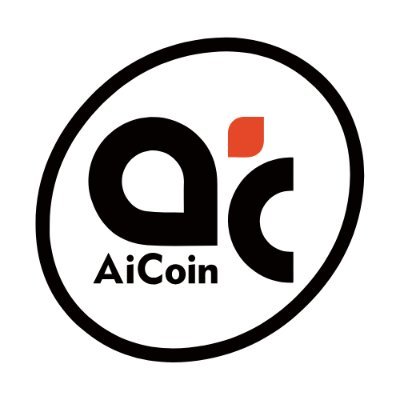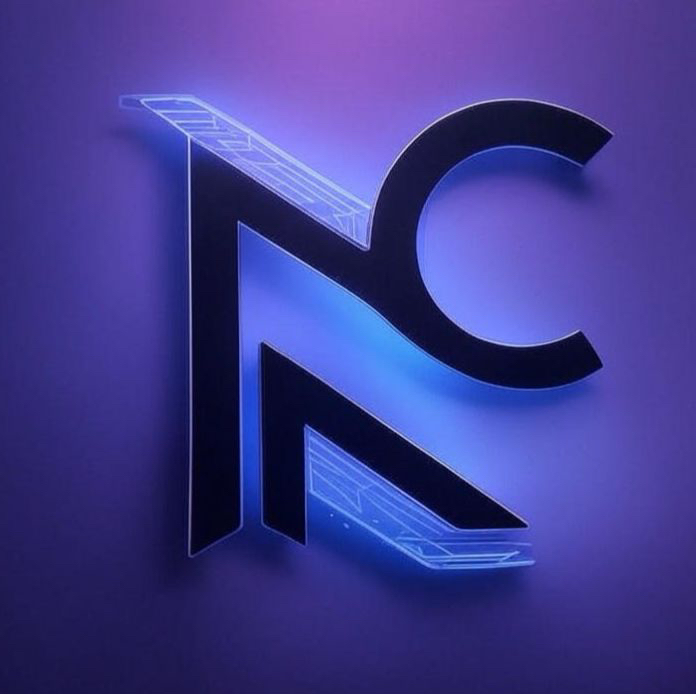Bitget: a 4ª maior corretora do mundo por volume de trading diário!
Participação de mercado do BTC62.55%
Novas listagens na Bitget : Pi Network
BTC/USDT$83564.00 (+1.20%)Índice de Medo e Ganância43(Medo)
Índice da temporada de altcoins:0(Temporada do Bitcoin)
Moedas listadas no pré-mercadoPAWS,WCTFluxo líquido total de ETFs spot de Bitcoin -$1M (1D); -$872.6M (7D).Pacote de presente de boas-vindas para novos usuários no valor de 6.200 USDT.Resgatar agora
Opere a qualquer hora e em qualquer lugar com o app da Bitget. Baixe agora
Bitget: a 4ª maior corretora do mundo por volume de trading diário!
Participação de mercado do BTC62.55%
Novas listagens na Bitget : Pi Network
BTC/USDT$83564.00 (+1.20%)Índice de Medo e Ganância43(Medo)
Índice da temporada de altcoins:0(Temporada do Bitcoin)
Moedas listadas no pré-mercadoPAWS,WCTFluxo líquido total de ETFs spot de Bitcoin -$1M (1D); -$872.6M (7D).Pacote de presente de boas-vindas para novos usuários no valor de 6.200 USDT.Resgatar agora
Opere a qualquer hora e em qualquer lugar com o app da Bitget. Baixe agora
Bitget: a 4ª maior corretora do mundo por volume de trading diário!
Participação de mercado do BTC62.55%
Novas listagens na Bitget : Pi Network
BTC/USDT$83564.00 (+1.20%)Índice de Medo e Ganância43(Medo)
Índice da temporada de altcoins:0(Temporada do Bitcoin)
Moedas listadas no pré-mercadoPAWS,WCTFluxo líquido total de ETFs spot de Bitcoin -$1M (1D); -$872.6M (7D).Pacote de presente de boas-vindas para novos usuários no valor de 6.200 USDT.Resgatar agora
Opere a qualquer hora e em qualquer lugar com o app da Bitget. Baixe agora



Preço de Virtuals ProtocolVIRTUAL
Listada
Moeda de cotação:
EUR
€0.4803+1.95%1D
Conversão de VIRTUAL para EUR
VIRTUAL
EUR
1 VIRTUAL = 0.00 EUR
A Bitget oferece as menores taxas de transação do mercado. Quanto mais alto for seu nível VIP, melhores serão as taxas.
Preço
TradingView
Capitalização de mercado
Gráfico de preços de Virtuals Protocol (VIRTUAL/EUR)
Última atualização em 2025-04-12 11:21:04(UTC+0)
Capitalização de mercado:€312,750,717.01
Capitalização de mercado totalmente diluída:€312,750,717.01
Volume em 24h:€228,878,703.52
Volume em 24h / capitalização de mercado:73.18%
Máxima em 24h:€0.5018
Mínima em 24h:€0.4536
Máxima histórica:€4.46
Mínima histórica:€0.006692
Oferta circulante:651,215,600 VIRTUAL
Oferta total:
1,000,000,000VIRTUAL
Porcentagem em circulação:65.00%
Oferta máxima:
1,000,000,000VIRTUAL
Preço em BTC:0.{5}6537 BTC
Preço em ETH:0.0003420 ETH
Contratos:
0x0b3e...24e7E1b(Base)
Mais
Como é a sua opinião sobre Virtuals Protocol hoje?
Observação: essas informações servem apenas como referência.
Preço de hoje de Virtuals Protocol em EUR
O preço em tempo real de Virtuals Protocol hoje é €0.4803 EUR, com uma capitalização de mercado atual de €312.75M. O preço de Virtuals Protocol aumentou 1.95% nas últimas 24 horas e o volume de trading em 24 horas é de €228.88M. A taxa de conversão de VIRTUAL/EUR (de Virtuals Protocol para EUR) é atualizada em tempo real.
Histórico de preços de Virtuals Protocol (EUR)
O preço de Virtuals Protocol variou +145.72% no último ano. O preço mais alto de VIRTUAL em EUR no último ano foi €4.46 e o preço mais baixo de VIRTUAL em EUR no último ano foi €0.01776.
PeríodoVariação de preço (%) Preço mais baixo
Preço mais baixo Preço mais alto
Preço mais alto 
 Preço mais baixo
Preço mais baixo Preço mais alto
Preço mais alto 
24h+1.95%€0.4536€0.5018
7d+0.67%€0.3737€0.5018
30d-12.21%€0.3737€0.7367
90d-80.62%€0.3737€3.48
1y+145.72%€0.01776€4.46
Todo o período+995.90%€0.006692(2024-01-23, 1 anos(s) atrás )€4.46(2025-01-02, 100 dia(s) atrás )
Qual é o preço mais alto do token Virtuals Protocol?
A máxima histórica (ATH) de Virtuals Protocol em EUR foi €4.46, registrada em 2025-01-02. Em comparação com a máxima histórica de Virtuals Protocol, o preço atual de Virtuals Protocol caiu 89.24%.
Qual é o preço mais baixo do token Virtuals Protocol?
A mínima histórica de Virtuals Protocol em EUR foi €0.006692, registrada em 2024-01-23. Em comparação com a máxima histórica de Virtuals Protocol, o preço atual de Virtuals Protocol subiu 7076.22%.
Previsão de preço do token Virtuals Protocol
Qual será o preço do token VIRTUAL em 2026?
Com base no modelo de previsão do desempenho histórico de preços de VIRTUAL, estima-se que o preço de VIRTUAL atinja €0.7865 em 2026.
Qual será o preço do token VIRTUAL em 2031?
Em 2031, espera-se que o preço de VIRTUAL varie em +23.00%. Ao final de 2031, estima-se que o preço de VIRTUAL atinja €1.51, com um ROI acumulado de +209.67%.
Perguntas frequentes
Quais fatores influenciam o preço do Virtuals Protocol?
O preço do Virtuals Protocol é influenciado por vários fatores, incluindo demanda e oferta de mercado, avanços tecnológicos, notícias regulatórias, parcerias e o desempenho geral do mercado de criptomoedas.
Como posso comprar Virtuals Protocol na Bitget Exchange?
Para comprar Virtuals Protocol na Bitget Exchange, você precisa criar uma conta, verificar sua identidade, depositar fundos e depois pode procurar o par de negociação Virtuals Protocol para fazer uma compra.
Qual é a previsão de preço futuro para o Virtuals Protocol?
É desafiador fornecer uma previsão exata de preço para o Virtuals Protocol devido à volatilidade do mercado, mas os analistas costumam observar fatores como desenvolvimento de projetos, tendências de mercado e taxas de adoção para um potencial crescimento futuro.
Por que o preço do Virtuals Protocol é tão volátil?
O preço do Virtuals Protocol é volátil porque o mercado de criptomoedas ainda é relativamente novo, com menor liquidez em comparação com os mercados tradicionais, e é influenciado por negociações especulativas e pelo sentimento do mercado.
O preço do Protocolo Virtual pode atingir R$100?
Embora alcançar R$100 seja possível, isso dependeria de aumentos significativos na demanda, adoção, parcerias e condições de mercado mais amplas, o que pode levar tempo para se desenvolver.
Como o staking do Virtuals Protocol afeta seu preço?
O staking do Virtuals Protocol pode reduzir a oferta disponível nas exchanges, potencialmente aumentando o preço se a demanda permanecer estável ou aumentar. Ele também incentiva a retenção, reduzindo a pressão de venda.
Quais são os riscos de investir no Protocolo Virtual?
Os riscos incluem alta volatilidade do mercado, mudanças regulatórias, potenciais vulnerabilidades de segurança e concorrência de outros projetos de blockchain. Os investidores devem fazer uma pesquisa completa antes de investir.
Com que frequência o preço do Protocolo Virtual muda?
O preço do Protocolo Virtual pode mudar a cada poucos segundos em plataformas de negociação como a Bitget Exchange, pois é determinado pela oferta e demanda do mercado em tempo real.
O Protocolo Virtuals é um bom investimento?
Se o Protocolo Virtuals é um bom investimento depende da tolerância ao risco individual, dos objetivos de investimento e da análise de mercado. É importante pesquisar e considerar tendências, casos de uso e a equipe por trás do projeto.
O que devo verificar antes de comprar o Virtuals Protocol?
Antes de comprar o Virtuals Protocol, verifique sua posição no mercado, as últimas notícias, atualizações de desenvolvimento, o volume de negociação na Bitget Exchange e o envolvimento da comunidade para tomar uma decisão informada.
Qual é o preço atual de Virtuals Protocol?
O preço em tempo real de Virtuals Protocol é €0.48 por (VIRTUAL/EUR), com uma capitalização de mercado atual de €312,750,717.01 EUR. O valor de Virtuals Protocol sofre oscilações frequentes devido às atividades 24h do mercado de criptomoedas. O preço atual e os dados históricos de Virtuals Protocol estão disponíveis na Bitget.
Qual é o volume de trading em 24 horas de Virtuals Protocol?
Nas últimas 24 horas, o volume de trading de Virtuals Protocol foi €228.88M.
Qual é o recorde histórico de Virtuals Protocol?
A máxima histórica de Virtuals Protocol é €4.46. Essa máxima histórica é o preço mais alto para Virtuals Protocol desde que foi lançado.
Posso comprar Virtuals Protocol na Bitget?
Sim, atualmente, Virtuals Protocol está disponível na Bitget. Para informações detalhadas, confira nosso guia Como comprar virtual-protocol .
É possível obter lucros constantes ao investir em Virtuals Protocol?
Claro, a Bitget fornece uma plataforma de trading estratégico com robôs de trading para automatizar suas operações e aumentar seus lucros.
Onde posso comprar Virtuals Protocol com a menor taxa?
Temos o prazer de anunciar que a plataforma de trading estratégico já está disponível na corretora da Bitget. A Bitget é líder de mercado no que diz respeito a taxas de trading e profundidade, o que garante investimentos lucrativos para os traders.
Notícias sobre Virtuals Protocol
Ver mais
Atualizações sobre Virtuals Protocol
Mercado de Virtuals Protocol
Total de ativos de Virtuals Protocol
Virtuals Protocol - Matriz de distribuição do total de ativos
Virtuals Protocol - Total de ativos por concentração
Baleias
Investidores
Varejo
Virtuals Protocol - Endereços por tempo de manutenção
Holders
Cruisers
Traders
Gráfico de preços ao vivo de coinInfo.name (12)

Preços globais de Virtuals Protocol
Qual é o valor de Virtuals Protocol em outras moedas atualmente? Última atualização: 2025-04-12 11:21:04(UTC+0)
VIRTUAL para MXN
Mexican Peso
$11.08VIRTUAL para GTQGuatemalan Quetzal
Q4.2VIRTUAL para CLPChilean Peso
$537.69VIRTUAL para UGXUgandan Shilling
Sh2,001.31VIRTUAL para HNLHonduran Lempira
L14.11VIRTUAL para ZARSouth African Rand
R10.44VIRTUAL para TNDTunisian Dinar
د.ت1.64VIRTUAL para IQDIraqi Dinar
ع.د713.43VIRTUAL para TWDNew Taiwan Dollar
NT$17.67VIRTUAL para RSDSerbian Dinar
дин.56.31VIRTUAL para DOPDominican Peso
$33.93VIRTUAL para MYRMalaysian Ringgit
RM2.41VIRTUAL para GELGeorgian Lari
₾1.5VIRTUAL para UYUUruguayan Peso
$23.63VIRTUAL para MADMoroccan Dirham
د.م.5.07VIRTUAL para AZNAzerbaijani Manat
₼0.93VIRTUAL para OMROmani Rial
ر.ع.0.21VIRTUAL para SEKSwedish Krona
kr5.33VIRTUAL para KESKenyan Shilling
Sh70.53VIRTUAL para UAHUkrainian Hryvnia
₴22.55- 1
- 2
- 3
- 4
- 5
Como comprar Virtuals Protocol(VIRTUAL)

Crie sua conta na Bitget gratuitamente
Crie sua conta na Bitget com seu e-mail ou número de celular e escolha uma senha forte para proteger sua conta.

Verifique sua conta
Verifique sua identidade inserindo suas informações pessoais e enviando um documento de identidade válido com foto.

Converter Virtuals Protocol em VIRTUAL
Escolha quais criptomoedas operar na Bitget.
Saiba maisOpere futuros perpétuos de VIRTUAL
Depois de abrir sua conta na Bitget e comprar tokens USDT ou VIRTUAL, você pode começar a operar derivativos, como futuros de VIRTUAL e operar com margem para aumentar sua renda.
O preço atual de VIRTUAL é €0.4803, com uma variação de preço em 24 horas de +1.95%. Os traders podem lucrar com um posições long ou short em futuros de VIRTUAL.
Siga traders de elite e faça Copy Trade de VIRTUAL.
Depois de criar sua conta na Bitget e comprar tokens USDT ou VIRTUAL, você também pode começar a seguir traders de elite e fazer copy trades.
Novas listagens na Bitget
Novas listagens
Comprar mais
Onde posso comprar Virtuals Protocol (VIRTUAL)?
Compre cripto no app da Bitget
Crie uma conta em poucos minutos para comprar cripto com cartão de crédito ou transferência bancária.
Seção de vídeos: verificação e operações rápidas

Como concluir a verificação de identidade na Bitget e se proteger contra golpes
1. Faça login na sua conta Bitget.
2. Se você for novo na Bitget, assista ao nosso tutorial sobre como criar uma conta.
3. Passe o mouse sobre o ícone do seu perfil, clique em "Não verificado" e clique em "Verificar".
4. Escolha seu país ou região emissora, o tipo de documento de identidade e siga as instruções.
5. Selecione como prefere concluir sua verificação: pelo app ou computador.
6. Insira seus dados, envie uma cópia do seu documento de identidade e tire uma selfie.
7. Envie sua solicitação e pronto. Verificação de identidade concluída!
Os investimentos em criptomoedas, incluindo a compra de Virtuals Protocol na Bitget, estão sujeitos a risco de mercado. A Bitget fornece maneiras fáceis e convenientes para você comprar Virtuals Protocol. Fazemos o possível para informar totalmente nossos usuários sobre cada criptomoeda que oferecemos na corretora. No entanto, não somos responsáveis pelos resultados que possam advir da sua compra Virtuals Protocol. Esta página e qualquer informação incluída não são um endosso de investimento ou a nenhuma criptomoeda em particular.
Conversão de VIRTUAL para EUR
VIRTUAL
EUR
1 VIRTUAL = 0.4803 EUR
A Bitget oferece as menores taxas de transação do mercado. Quanto mais alto for seu nível VIP, melhores serão as taxas.
Avaliações de Virtuals Protocol
Média de avaliações da comunidade
4.6
Este conteúdo é apenas para fins informativos.
Bitget Insights
BGUSER-0CTGQ2KP
3h
VIRTUAL/USDT.5461 12 avril 3.30am 14-15%
VIRTUAL+3.39%

Aicoin-EN-Bitcoincom
4h
Block Fined $40M Over Cash App’s Crypto Compliance Failures and 169K Ignored Alerts
New York State’s Department of Financial Services (DFS) announced on April 10 that Block Inc. will pay a $40 million fine and hire an independent monitor, following findings of significant violations in the company’s anti-money laundering and virtual currency compliance systems related to its Cash App platform.
The DFS found that Block’s rapid growth exceeded its capacity to establish adequate oversight, heightening the risk of illicit financial activity. The regulator said the company’s failures violated New York regulations for financial institutions and virtual currency firms. It cited weak internal controls over fiat and bitcoin transactions, including lapses in customer due diligence, sanctions screening, and monitoring for suspicious activity. By 2020, Block had accumulated a backlog of more than 169,000 unreviewed transaction alerts. Superintendent Adrienne A. Harris stressed:
All financial institutions, whether traditional financial services companies or emerging cryptocurrency platforms, must adhere to rigorous standards that protect consumers and the integrity of the financial system.
“Compliance functions must keep pace with company growth or expansion. The rapid growth of Block’s Cash App absent a robust compliance function created risk and vulnerabilities that violated the rules financial services companies operating in New York must adhere to. The Department is taking decisive steps to ensure accountability, including the appointment of an independent monitor to oversee corrective measures,” she continued.
In Block’s consent order, DFS provided further violation details, including the company’s failure to screen transactions with potential links to terrorism until a recipient wallet’s exposure exceeded 10%, and its inadequate treatment of anonymizing services like mixers. The DFS claimed:
The AML program run by Block … failed to adequately consider the substantial risks posed to an entity of its new size and complexity.
The order also revealed that between 2018 and 2021: “Block had accumulated a transaction monitoring backlog of approximately 18,000 alerts, which grew to over 169,000 by 2020.” DFS added that “between February 2021 and September 2022 … SARs, for both bitcoin and fiat transactions, were at times filed over a year after the alerts were first generated.” Block’s risk rating for transactions involving mixers was also cited, as DFS noted that despite guidance: “Block risk rated transactions identified as having exposure to mixers as ‘medium’ risk, rather than the ‘high’ risk rating that is appropriate.”
免责声明:本文章仅代表作者个人观点,不代表本平台的立场和观点。本文章仅供信息分享,不构成对任何人的任何投资建议。用户与作者之间的任何争议,与本平台无关。如网页中刊载的文章或图片涉及侵权,请提供相关的权利证明和身份证明发送邮件到support@aicoin.com,本平台相关工作人员将会进行核查。
ORDER+0.10%
S+6.59%

NexaCrypto
15h
Pi Network Price Outlook: Breakout or Breakdown? Bulls Eye $3 as Network Fees Surge 400%
The price of Pi Network (PI) is showing signs of potential upside momentum as bulls attempt to push the token above a descending parallel channel. On the 4-hour chart, the PI token continues to consolidate within this channel, reflecting the ongoing battle between bullish and bearish forces. Bulls have successfully flipped the 50-day moving average into immediate support at $0.58, now targeting the next resistance level at $0.97. The key question remains: can Pi reclaim the $3 level?
Pi Network Developments: Navigating Uncertainty with Innovation
Pi Network’s unique mobile-first mining approach has drawn global attention, but recent volatility has tested community confidence. Following a dip near $0.30, uncertainty grew among users. Amid broader market weakness, leading members of the Pi community have stepped up to reaffirm the project’s long-term potential.
Founder and lead developer Nicolas Kokkalis has continued to release reassuring updates, emphasizing that the network’s development is ongoing and deliberate:
“Pi’s future is being carefully built, brick by brick.”
The Pi Core Team also rolled out several platform updates, including:
• A mobile-first experience as the new technical standard
• Mandatory KYC verification
• An enhanced Pi SDK, enabling mini-games, virtual services, and DEX integration
Notably, over 200,000 bids were placed for Pi domain names—signaling strong user engagement and growing ecosystem interest.
119 Million PI Tokens Set for Release, Analysts Remain Bullish
According to Pi Scan, over 119 million PI tokens are expected to enter circulation this month, with 1.4 million becoming available on April 11 alone. These tokens will be gradually released over the coming weeks.
Popular crypto analyst Moon Jeff highlighted a significant spike in transaction fees—reportedly up 400%—as a potential bullish indicator:
CORE-1.36%
VIRTUAL+3.39%
BGUSER-7QA7U04Y
17h
buy ya sell please tell me
$VIRTUAL
VIRTUAL+3.39%

Kanyalal
17h
Ethereum (ETH) is a decentralized, open-source blockchain platform that enables developers to build and deploy smart contracts and decentralized applications (dApps). It was proposed in late 2013 by Vitalik Buterin, a Russian-Canadian programmer, and development began in 2014. Ethereum was officially launched in July 2015. The platform’s native cryptocurrency, Ether (ETH), is used to pay for transaction fees, computational services, and the execution of smart contracts on the network.
Key Features of Ethereum:
1. Smart Contracts: One of Ethereum’s most revolutionary features is its ability to execute smart contracts. These are self-executing contracts where the terms of the agreement are directly written into code. Smart contracts automatically execute actions when predefined conditions are met, eliminating the need for intermediaries, thus making transactions more efficient, secure, and transparent.
2. Ethereum Virtual Machine (EVM): The Ethereum Virtual Machine (EVM) is the decentralized computer that executes smart contracts on the Ethereum blockchain. It allows developers to create and deploy applications that can run on the Ethereum network. It is crucial in maintaining the state of the blockchain and ensuring that all transactions are processed consistently across nodes in the Ethereum network.
3. Decentralized Applications (dApps): Ethereum provides the foundation for building dApps. These are applications that run on a blockchain or a peer-to-peer network, ensuring they are transparent, secure, and without central control. Examples include decentralized finance (DeFi) platforms, gaming platforms, and NFT (non-fungible token) marketplaces.
4. Proof of Stake (PoS) Consensus: Ethereum originally used the Proof of Work (PoW) consensus algorithm, similar to Bitcoin, which involved miners solving cryptographic puzzles to validate transactions and create new blocks. However, Ethereum transitioned to Proof of Stake (PoS) with the Ethereum 2.0 upgrade, which started in December 2020. In PoS, validators replace miners to secure the network by staking their ETH as collateral to propose new blocks. PoS is more energy-efficient than PoW, reduces centralization, and improves scalability.
5. Scalability and Upgrades (Ethereum 2.0): Ethereum’s original design faced scalability challenges, especially as the network grew and transaction volumes increased. To address this, Ethereum is undergoing a series of upgrades under the Ethereum 2.0 initiative. These upgrades aim to enhance scalability, security, and sustainability through:
Sharding: The process of splitting the Ethereum network into multiple smaller chains (shards) to handle more transactions simultaneously.
Proof of Stake (PoS): Transitioning from Proof of Work (PoW) to PoS for better efficiency and lower energy consumption.
6. Gas Fees: Gas fees are the transaction fees users pay to conduct operations on the Ethereum network. These fees vary based on network demand and the complexity of the operation. Gas fees have often been a point of criticism due to their high volatility, but Ethereum’s upgrade to Ethereum 2.0 aims to address this issue.
How Ethereum Works:
1. Ether (ETH): Ether is the native cryptocurrency of the Ethereum network and is used to power smart contracts and dApps. It is required for both transaction fees and computational services. Unlike Bitcoin, which primarily acts as a store of value, Ethereum is designed to be used as a "fuel" for decentralized applications, allowing developers to create complex financial and non-financial applications.
2. Smart Contracts Execution: When a user initiates a transaction or interaction with a dApp on Ethereum, the transaction is sent to the network, where miners (in the PoW model) or validators (in the PoS model) process it. The EVM executes the smart contract, which automatically carries out the terms of the contract, such as transferring funds or triggering actions.
3. Staking and Ethereum 2.0: Ethereum’s shift to PoS (part of Ethereum 2.0) allows anyone who holds at least 32 ETH to become a validator and participate in securing the network. Validators are chosen to propose and verify blocks, earning rewards in ETH for their participation. Staking helps secure the network and replace the energy-intensive mining process from Ethereum’s previous PoW model.
Advantages of Ethereum:
1. Smart Contract Functionality: Ethereum’s smart contract functionality has revolutionized the way digital agreements are executed, reducing the need for middlemen and making transactions more secure, efficient, and transparent.
2. Decentralization: Like Bitcoin, Ethereum is decentralized, meaning no central authority governs or controls the network. This ensures the network is resilient to censorship and operates without the interference of governments or corporations.
3. Support for dApps: Ethereum’s robust ecosystem supports the creation of decentralized applications (dApps). This broadens the scope of blockchain technology beyond digital currencies to areas like finance (DeFi), entertainment, gaming, and even identity management.
4. Ethereum 2.0 (PoS): The transition to PoS is seen as a significant advantage, as it makes Ethereum more energy-efficient and scalable. This change should allow Ethereum to handle more transactions, reduce gas fees, and provide greater security.
5. Large Developer Community: Ethereum has one of the largest and most active developer communities, continually innovating and pushing the boundaries of what’s possible in the blockchain space. This community support drives growth and the continuous improvement of the Ethereum network.
Disadvantages of Ethereum:
1. Scalability Issues: Although Ethereum is working toward improvements with Ethereum 2.0 and sharding, scalability remains a challenge. As the network grows and adoption increases, transaction speeds can slow down, and gas fees can become prohibitively high during peak demand.
2. Gas Fees: Gas fees are one of the biggest issues with Ethereum. During periods of high demand, the fees can rise dramatically, making simple transactions expensive. However, Ethereum 2.0 is expected to bring improvements to gas fee management, though the problem may not be fully resolved until sharding is implemented.
3. Security Vulnerabilities: Although Ethereum’s blockchain is generally secure, there have been instances of security vulnerabilities in smart contracts. Poorly written code can lead to issues like funds being stolen or lost. Users are advised to be cautious when interacting with smart contracts.
4. Complexity: Ethereum’s ecosystem, including smart contract creation, decentralized finance (DeFi), and NFTs, can be complex for new users. There is a steep learning curve, and mistakes can be costly.
Ethereum's Impact on the Financial Ecosystem:
1. Decentralized Finance (DeFi): Ethereum has been the driving force behind the rise of decentralized finance (DeFi), a movement aimed at replacing traditional financial intermediaries (banks, lenders, and brokers) with decentralized applications. Ethereum-based platforms allow users to borrow, lend, trade, and earn interest on their crypto assets without needing a bank.
2. NFTs (Non-Fungible Tokens): Ethereum is also the foundation for the booming NFT market. NFTs are unique digital tokens that represent ownership or proof of authenticity for digital assets like art, music, and collectibles. Ethereum’s ERC-721 standard is widely used for creating NFTs.
3. Enterprise Use Cases: Ethereum is increasingly being adopted for enterprise use cases, such as supply chain management, voting systems, and identity verification. Its flexible platform allows businesses to create customized blockchain solutions for a variety of industries.
The Future of Ethereum:
The future of Ethereum is filled with potential, especially with the ongoing developments in Ethereum 2.0. The shift to PoS and the eventual implementation of sharding should address many of Ethereum’s scalability and high gas fee issues. As more applications are built on Ethereum and its ecosystem expands, it could play a central role in the global transition to a decentralized economy.
In conclusion, Ethereum’s combination of smart contract functionality, dApp support, and continuous upgrades positions it as one of the most influential blockchain platforms in the world. Despite facing challenges like scalability and high gas fees, Ethereum’s active development community and transition to Ethereum 2.0 give it strong growth potential.
$ETH
FUEL+8.43%
ETH+1.97%
Ativos relacionados
Criptomoedas populares
Uma seleção das 8 principais criptomoedas por valor de mercado.
Adicionado recentemente.
As criptomoedas adicionadas mais recentemente.
Capitalização de mercado comparável
Entre todos os ativos da Bitget, esses 8 são os mais próximos do Virtuals Protocol em valor de mercado.
Informações adicionais sobre Virtuals Protocol
Visão geral da moeda
Relacionado a moedas
Relacionado ao trading
Atualizações de moeda
Operar
Earn
VIRTUAL está disponível para operação na Bitget e pode ser mantido sob custódia na Bitget Wallet. A Bitget também é uma das primeiras corretoras centralizadas (CEX) a disponibilizar operações com VIRTUAL.
Você pode operar VIRTUAL na Bitget.VIRTUAL/USDT
SpotVIRTUAL/USDT
MargemVIRTUAL/USDT
Futuros USDT























.png)








